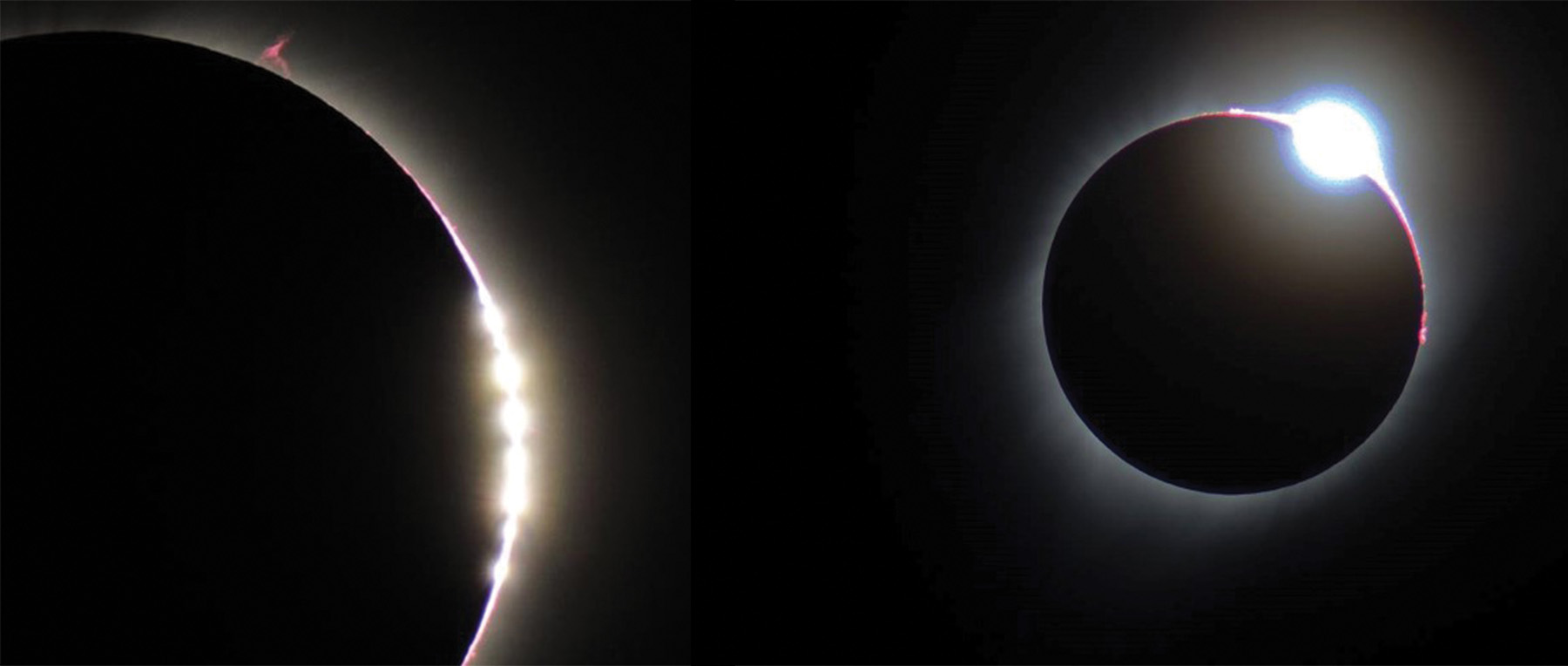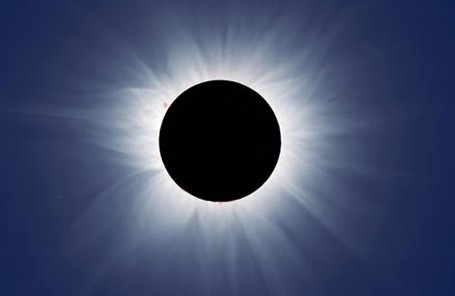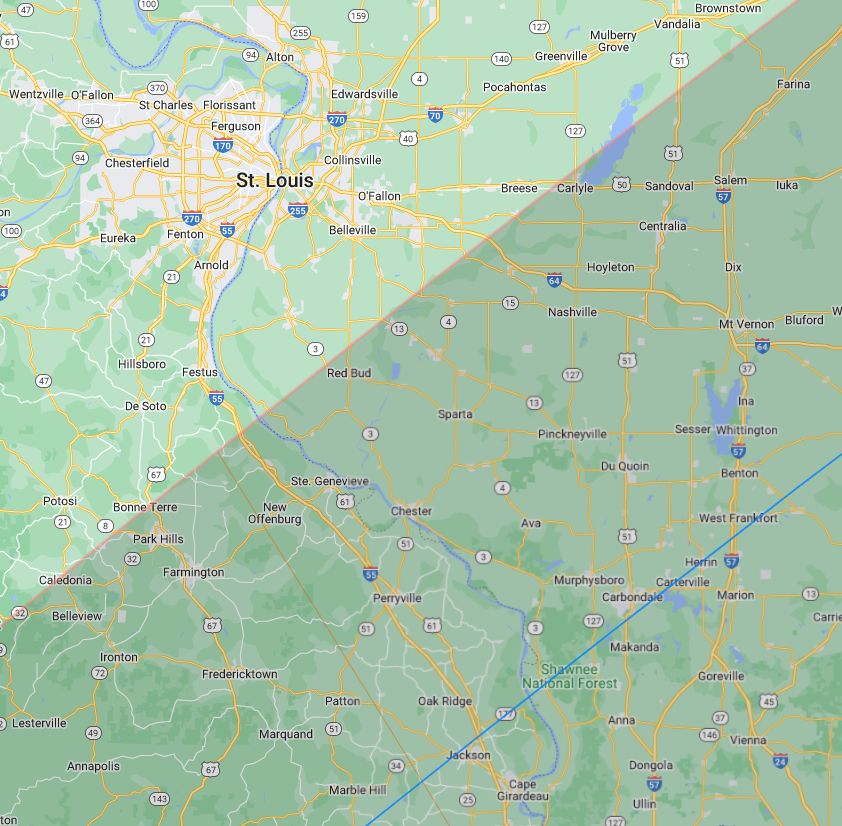THE APRIL 8 SOLAR ECLIPSE PART II: WHERE THE MAGIC HAPPENS (and why you should see it!)
As I mentioned in Part I of this eclipse series, the upcoming solar eclipse is a very big deal. Eclipses that pass through the United States coast to coast are not common at all. There was a span of 38 years between the events of February 26, 1979 and August 21, 2017, and then seven years until this April’s event. It will be more than 21 years until there is another “Great American Eclipse”- on August 12, 2045. How old will you be then? I hope to see it, but given that I am on the far side of sixty now, having life, eyesight, and mind all sufficiently intact at that point is by no means a sure thing.
Of course partial eclipses of the Sun are much more common, but if even a small part of the Sun is not covered by the Moon, the amazing effects seen within the path of totality will not be seen. That is why we are not recommending that you go to the Gateway Arch on April 8, even though we will experience a 98.8% eclipse. What are these effects? Just before and after totality, sunlight peeks through some of the valleys at the Moon’s limb, creating Baily’s Beads, which might be seen for a few seconds. And then, there will be a moment in time where just one area of sunlight is still visible- the famous Diamond Ring.

Baily’s Beads (left, courtesy of Mr.Eclipse.com) and the Diamond Ring (right, photo by our Sky Ranger) are both caused by sunlight peeking through valleys at the Moon’s edge. They are visible for a few seconds just before the total phase of the eclipse begins and after it ends, if you are in the path.
The two photos above also show prominences, the pink “flares” that might be seen next to the edge of the Sun during totality. They are best seen using binoculars or a small telescope- do not use these until the Sun is completely gone and totality is underway. You may be able to purchase safe solar film that you can securely mount to the front of your camera or telephoto lens in order to view before and after totality. Another feature that some my friends have seen is shadow bands. These are seen when the Sun is an extremely thin crescent and are caused by turbulence in Earth’s atmosphere affecting the shadows in a way similar to how stars twinkle. Bring a white sheet and place it on the ground to try to see these. To be honest, I have never seen the shadow bands, but I do plan to try this time if conditions permit. I have also noticed significant temperature drops and how the winds pick up during totality. Animal sounds may be striking, as they are surprised to experience “sunset” in the middle of the day and then “sunrise” just a few minutes later.

Eerie shadow bands might be seen for a short time before and after totality, as seen in this image (left) from Sky & Telescope. The National Weather Service reported a significant drop in temperature during totality in Carbondale, Illinois in 2017 (right).
Of course, the most amazing thing to be seen during totality is the corona. The corona is the outermost atmosphere of the Sun, so far away from the core that the gases are as much as 10 million times less dense as they are at the Sun’s surface. This causes the corona to be very dim, so that it is only visible during totality or with special instruments. These gases form a plasma that forms itself into beautiful loops and streamers which cause no two total eclipses of the Sun to look exactly the same.

This image, from Mreclipse.com, comes as close to capturing the ghostly nature of the corona as seen with the unaided eye, binoculars, or a small telescope. Remember that solar filters MUST be used until the last bit of sunlight fades away and totality begins!
For all of these reasons, a total eclipse is vastly more impressive than even a very large partial event like most of the immediate St. Louis area will see, which will be like being one number off on the lottery. A 98% eclipse is maybe one tenth as good as a total eclipse. I can’t say too many times that if there is any way you can make it into the path of totality on April 8, you should. The next question is, where should you go?
The Moon’s shadow moves at about 1,500 miles per hour during this year’s eclipse, and the point where it meets the Earth is never more than about 125 miles wide. This means that the longest totality can last at any location during this eclipse is just over four minutes, near the center line, with shorter times as you move towards the northern and southern edges of the path. However, I had a great experience seeing just 33 seconds of darkness at the total eclipse in South Australia in 2002, so don’t feel like you have to go all the way to the center line, with the likely very heavy traffic. In the St. Louis area, this would include Cape Girardeau or Jackson, MO or Carbondale, Illinois. At this point, accommodations in those areas will be very hard to find and are likely to be very expensive- but if you have a friend who lives in these places, try to bunk with them for the night before and the night after the eclipse! A great interactive map, through Eclipse2024.org, will allow you to pick any spot and determine the length of totality and the exact time it takes place (about 2 pm in the St. Louis area). Here is the link: Total Solar Eclipse 2024 - Xavier's Interactive Google Map Instructions. However, towns as little as 20 miles inside the limit of the eclipse get close to three minutes of totality, or more than anybody had in 2017.
Around the USA, major cities like Dallas-Ft. Worth, Evansville (IN), Cleveland, and Buffalo are in the path, as can be seen below. According to Greatamericaneclipse.com, another great resource, about 31,000,000 people live within the path of totality on April 8, and many more within an easy drive, so traffic could be a problem, especially after the end of the eclipse. My family and I found it very strange to be caught in gridlock at 2 o’clock in the morning in northern Colorado after the 2017, heading back to Denver after viewing the eclipse of central Wyoming. As strange as it might seem, the weirdness and uniqueness of the situation made it almost fun! To minimize jams, view from near the edges of the path rather than the center line, and consider leaving soon after totality rather than staying for the concluding partial stages of the eclipse, which last an additional 75 minutes.
In the last blog entry in this series about the eclipse, due to come out about April 1st, I will write about the various ways in which you can safely view the event, both during the partial and total phases.

The path of totality close to the St. Louis area, April 8 2024. Totality lasts just over 4 minutes at the blue center line, near Jackson & Cape Girardeau MO or Carbondale IL. If you are not local to St. Louis, websites like Greatamericaneclipse.com have fine maps of the entire path.
Would you like to learn more about the eclipse and get some free eclipse glasses? Our next Eclipse Education Event will take place on Saturday, March 23. Missouri Eclipse Task Force leader Don Ficken will discuss the ins and outs of the eclipse in a free program held in Tucker Theater at 2 pm. Kids 4-13 can pick up Junior Ranger Eclipse Explorer booklets and earn a special badge. Weather permitting, there will be free safe solar viewing on our Entrance Plaza after this event, until 4 pm. Reservations can be made at The Great American Eclipse of 2024 (FREE) | The Gateway Arch for a nominal processing fee, or you can call 314-655-1704.
